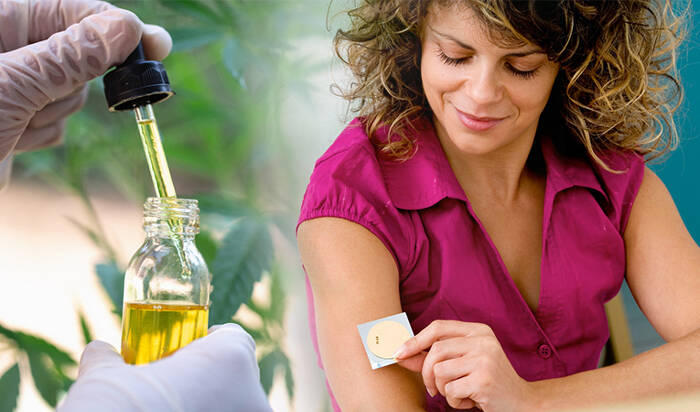CBD patches: What you need to know
Cannabidiol (CBD) products have exploded over the last few years. Long departed from only being smoked as a part of cannabis, CBD has taken on a life of its own in the world of therapeutics and medicine.
As a result of it’s improved legal status when compared to its sister compound THC, there is a vast body of research surrounding how we can better access its health benefits.
CBD Patches: A Better Delivery System?
Most people are familiar with CBD as an oil or vape but there are less well known methods of intake such as intranasal, transmucosal and transdermal delivery.
CBD patches deliver the compound transdermally, that is it passes through the skin to enter your bloodstream.It is the lipophilic (attaches to fat) nature of CBD that allows these new approaches to work so well.
The CBD is drawn directly into our skin cells where it diffuses and becomes part of our endocannabinoid system, attaching to cannabinoid (CB) receptors and providing us with its therapeutic benefits.
The great news is that patches offer a more stable approach to your CBD intake. Research has shown that oral ingestion (eating CBD) has a 20-30% absorption rate whilst inhalation can vary between 10 to 60%.[1]
Why Patches might be better than oral CBD
Whilst ingesting CBD might feel easier and more convenient than using a transdermal patch, absorption can be inconsistent and unreliable.
Typically it takes 1 to 2 hours to reach the highest blood CBD levels but in some cases it can take up to 6 hours.[2] This of course gives the user a ‘peak and trough’ effect, where the levels of CBD rise sharply, after eating a gummy for example, before tapering off throughout the rest of the day.
Patches on the other hand use either a simple reservoir or a more complex, slow release reservoir called a matrix. They have been shown to reach peak absorption after 24 hours and stay stable until a full 72 hours have passed.
Using the skin as an entry point to the body has further benefits when compared to the oral route. Cannabinoids in general are metabolised by the liver and altered by enzymes in the gut. Using patches avoids liver metabolism and therefore improves CBD availability in the bloodstream.
Together these properties make patches the preferred choice for some. There are no peaks of CBD with potential unwanted side effects – Patched provide a steady infusion over a long period of time and there are localised benefits as well.
What are localised benefits?
Much like rubbing ibuprofen gel on a sore knee, CBD patches allow for direct delivery of CBD to whichever area of your body you feel requires attention.
Studies are still in the preliminary stages, but there is evidence that this works for conditions like dermatitis and arthritic joints. These studies also confirmed the increased absorption of CBD via the skin rather than orally.[3][4]
Who are CBD patches best for?
Of course CBD patches have the same wide audience as other forms of CBD – They are a great option for those looking to decrease stress and tension in a natural way.
Due to the fact CBD bypasses the liver and is therefore not metabolised they are likely a more budget conscious choice as well.
CBD patches will be of most benefit for those looking for fast-acting, location specific pain relief. If you suffer from knee pain for example,placing the patch directly on the knee is a safe way to alleviate the discomfort. Those looking for more general benefits should place the patch on their lower abdomen or wrist.
References
- Pharmacokinetics and pharmacodynamics of cannabinoids. Grotenhermen F, Clin Pharmacokinet. 2003; 42(4):327-60.
- Bruni, Natascia et al. “Cannabinoid Delivery Systems for Pain and Inflammation Treatment.” Molecules (Basel, Switzerland) vol. 23,10 2478. 27 Sep. 2018, doi:10.3390/molecules23102478
- Tubaro A., Giangaspero A., Sosa S., Negri R., Grassi G., Casano S., Loggia R.D., Appendino G. Comparative topical anti-inflammatory activity of cannabinoids and cannabivarins. Fitoterapia. 2010;81:816–819. doi: 10.1016/j.fitote.2010.04.009.
- Hammell D.C., Zhang L.P., Ma F., Abshire S.M., McIlwrath S.L., Stinchcomb A.L., Westlund K.N. Transdermal cannabidiol reduces inflammation and pain-related behaviours in a rat model of arthritis. Eur. J. Pain. 2016;20:936–948. doi: 10.1002/ejp.818.





